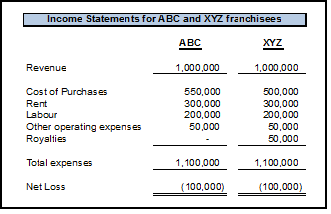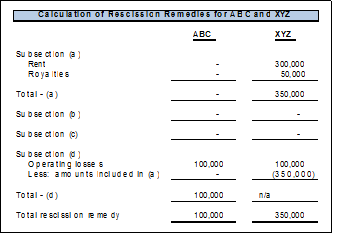Section 6(6) of the Arthur Wishart Act gives franchisees the right to rescind their franchise agreements in the event that they do not receive a disclosure document. Ostensibly, the rescission remedy is designed to return the franchisee to the position it was in immediately prior to entering into the franchise agreement. Based on a recent ruling by the Ontario Superior Court,however, franchisees may in fact find themselves in a significantly better financial position following rescission.
In the event of a successful rescission, the Act requires that the franchisor:
a) Refund any money received from the franchisee, other than money for inventory, supplies or equipment;
b) Purchase from the franchisee any inventory that the franchisee had purchased;
c) Purchase from the franchisee any supplies and equipment that the franchisee had purchased; and
d) Compensate the franchisee for any losses incurred in acquiring, setting up and operating the franchise, less the amounts set out in clauses (a) to (c).
The effect of these four clauses, in combination, is to return the franchisee to its financial position prior to entering into the franchise agreement. Money invested by the franchisee will have been spent on purchasing assets for the franchise and the financing of operating losses. Clauses (a) through (c) of section 6(6) recognize that upon rescission, many of the assets purchased by the franchisee are of minimal value to the franchisee, and will be difficult to sell. These clauses therefore allow the franchisee to sell these assets to the franchisor at their original cost.Under clause (d),meanwhile, the Act allows the franchisee to recoup any money spent in financing operating losses.
In 2189205 Ontario Inc. et al. v. Springdale Pizza Depot Ltd. et al.(2013 ONSC 1232), the plaintiffs submitted a rescission claim under section 6(6) for approximately $354,000, including $113,000 in operating losses under subsection (d). Master Muir ruled that, based on the evidence, the plaintiffs had in fact operated their franchise at a small profit. The defendants argued that this profit should be offset against the amounts calculated under clauses (a) through (c). Master Muir rejected this argument. The defendants brought a motion seeking to oppose confirmation of Master Muir’s ruling, but Justice Lederman upheld the decision, ruling that “a rescinding franchisee is entitled to recover all amounts under ss. (a) – (c) … even if it has otherwise made a profit during the period of operation”.
This ruling is of significance for two reasons. Most obviously, it means that franchisees are able to rescind their agreements without having to pay to the franchisor any profits that they have made from the operation of their businesses; franchisees can thus be placed in a better financial position than they had been in prior to purchasing the franchise. Second, it means that how the franchise agreement is structured can matter a great deal.
Two franchisees with identical financial results but slightly different franchise agreements may end up with radically disparate rescission awards. Consider the following example:
1. Under system ABC, franchisees pay their rent directly to their landlord; under system XYZ, the franchisor sublets the location.
2. Under system ABC, franchisees pay a 10% mark-up on purchases of inventory, which they buy from the franchisor; under system XYZ, franchisees pay a 5% royalty on sales.
Both franchisees suffer operating losses of $100,000 as shown below in Table 1:
Each rescinds its agreement under section 6(6). For the sake of simplicity, assume that both franchisees manage to sell off all remaining inventory, supplies and equipment at their original cost.
Table 2 shows the rescission remedy for each franchisee. ABC’s calculation is straightforward. It has not paid any amount to the franchisor, other than for inventory, and its rent is paid directly to its landlord – it has no claim under (a), (b) or (c). It simply recoversits $100,000 operating loss under (d), and is thus restored to its original financial position.
XYZ, on the other hand, has paid $300,000 in rent to the franchisor on its sublease; it has also paid royalties of $50,000 on its sales (not on its inventory purchases); therefore, it collects $350,000 under (a). As with XYZ, no inventory, supplies or equipment remain to be claimed under (b) or (c). Under (d), we start with XYZ’s operating loss of $100,000. However, once we deduct the $350,000 already included under subsection (a), there is no longer any amount to consider. Abandoning any claim under (d), XYZ walks away with a rescission remedy of $350,000, in spite of having lost only $100,000. XYZ receives a windfall of $250,000.
This example demonstrates that the Springdale decision may lead to anomalous financial rewards, and suggests that solicitors drafting franchise agreements would be wise to consider the potential categorization of payments required from the franchisee in the event rescission damages are ultimately claimed.
By Ephraim Stulberg. Published in The Lawyers Weekly, May 10, 2013
The statements or comments contained within this article are based on the author’s own knowledge and experience and do not necessarily represent those of the firm, other partners, our clients, or other business partners.



















